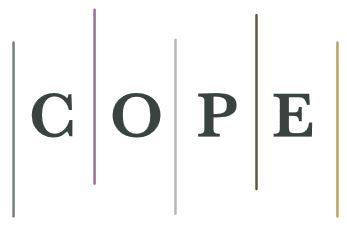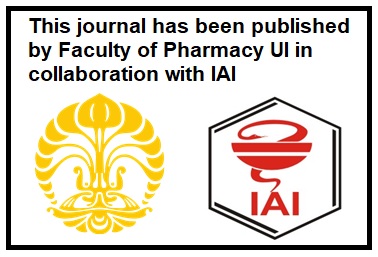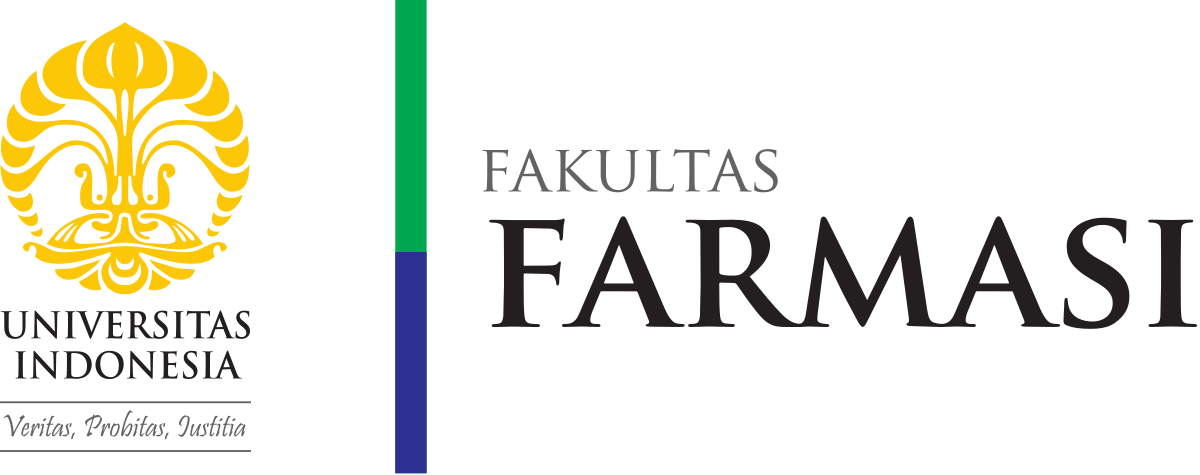Abstract
The standardization of raw materials from nature is essential before they are made into products. Until now, there is still limited information regarding the standardization of propolis from stingless bees. This research aims to determine the bioactivity with standardized specific and non-specific parameters of ethanol extracts from Homotrigona apicalis and Homotrigona fimbriata propolis. The methods include organoleptic tests, tests for water-soluble and ethanol-soluble compound content, drying shrinkage tests, specific gravity tests, water content tests, metal contamination tests, phytochemical screening, and determining total phenolic and flavonoid content. The free radical scavenging capacity was measured using the DPPH (1,1-diphenyl-2-picrylhydrazyl) method, and antimicrobial activity against Candida albicans, Propionibacterium acnes, Streptococcus mutans, Salmonella typhi, and Escherichia coli was assessed using the agar well diffusion method. The results indicated that the standardization parameters tested on H. apicalis and H. fimbriata propolis met the standard criteria. Both species contain alkaloids, flavonoids, phenolics, tannins, and saponins. Generally, the propolis extracts from these two stingless bees exhibit potential antioxidant and antimicrobial effects. The total phenolic content for H. apicalis was 0.963 ± 0.041 mg GAE/g, while for H. fimbriata, it was 0.345 ± 0.004 mg GAE/g. The total flavonoid content for H. apicalis was 12.066 ± 0.465 mg QE/g, and for H. fimbriata, it was 9.325 ± 0.031 mg QE/g. All these results can be used as a reference for developing products derived from stingless bees.
References
Anjum, S. I., Ullah, A., Khan, K. A., Attaullah, M., Khan, H., Ali, H., Bashir, M. A., Tahir, M., Ansari, M. J., Ghramh, H. A., Adgaba, N., & Dash, C. K. (2019). Composition and functional properties of propolis (bee glue): A review. Saudi Journal of Biological Sciences, 26(7), 1695–1703. https://doi.org/10.1016/j.sjbs.2018.08.013
Antolovich, M., Prenzler, P., Robards, K., & Ryan, D. (2000). Sample preparation in the determination of phenolic compounds in fruits. In Analyst. https://doi.org/10.1039/b000080i
Arisandy, D. (2018). Ekstraksi Senyawa Fenolik dari Biji Terong Belanda dengan Metode Microwave Assisted Extraction (Studi Variasi Rasio Pelarut dan Waktu Ekstraksi). Universitas Brawijaya.
Aziz, A., Yuliawan, V. N., & Kustiawan, P. M. (2021). Identification of Secondary Metabolites and Antibacterial Activity of Non Polar Fraction from Heterotrigona itama Propolis. Journal of Fundamental and Applied Pharmaceutical Science, 2(1), 23–33. https://doi.org/10.18196/jfaps.v2i1.12406
Banskota, A. H., Nagaoka, T., Sumioka, L. Y., Tezuka, Y., Awale, S., Midorikawa, K., Matsushige, K., & Kadota, S. (2002). Antiproliferative activity of the Netherlands propolis and its active principles in cancer cell lines. Journal of Ethnopharmacology, 80(1), 67–73. https://doi.org/10.1016/S0378-8741(02)00022-3
Chuttong, B., Lim, K., Praphawilai, P., Danmek, K., Maitip, J., Vit, P., Wu, M.-C., Ghosh, S., Jung, C., Burgett, M., & Hongsibsong, S. (2023). Exploring the functional properties of propolis, geopropolis, and cerumen, with a special emphasis on their antimicrobial effects. Foods, 12(21), 3909. https://doi.org/10.3390/foods12213909
De Morais, D. V., Rosalen, P. L., Ikegaki, M., de Souza Silva, A. P., Massarioli, A. P., & Alencar, S. M. D. (2021). Active antioxidant phenolics from Brazilian red propolis: An optimization study for their recovery and identification by LC-ESI-QTOF-MS/MS. Antioxidants, 10(2), 297. https://doi.org/10.3390/antiox10020297
Demiati, R., Avimaro, R. A., & Kustiawan, P. M. (2024). Antioxidant Activity of Homotrigona fimbriata Propolis Extract. Medical Sains: Jurnal Ilmiah Kefarmasian, 9(1), 41–48.
Dezmirean, D. S., Paşca, C., Moise, A. R., & Bobiş, O. (2020). Plant sources responsible for the chemical composition and main bioactive properties of poplar-type propolis. Plants. https://www.mdpi.com/2223-7747/10/1/22
Dias, L. G., Pereira, A. P., & Estevinho, L. M. (2012). Comparative study of different Portuguese samples of propolis: Pollinic, sensorial, physicochemical, microbiological characterization and antibacterial activity. Food and Chemical Toxicology. https://www.sciencedirect.com/science/article/pii/S0278691512006400
Dolanbay, S. N., Kocanci, F. G., & Aslim, B. (2021). Neuroprotective effects of allocryptopine-rich alkaloid extracts against oxidative stress-induced neuronal damage. Biomedicine & Pharmacotherapy, 140, 111690.
Duru, I. A. (2021). Comparative phytochemical analysis of brown, green and red propolis from Umudike, Abia State Nigeria. Advanced Journal of Chemistry-Section B, 3(1), 86–97. https://doi.org/10.22034/AJCB.2021.121910
Grecka, K., & Szweda, P. (2021). Synergistic effects of propolis combined with 2-phenoxyethanol and antipyretics on the growth of Staphylococcus aureus. Pharmaceutics, 13(2), 215
Hochheim, S., Guedes, A., Faccin-Galhardi, L., Rechenchoski, D. Z., Nozawa, C., Linhares, R. E., Filho, H. H. ., Rau, M., Siebert, H. A., Micke, G., & Cordova, C. M. M. D. (2019). Determination of phenolic profile by HPLC–ESI-MS/MS, antioxidant activity, in vitro cytotoxicity and anti-herpetic activity of propolis from the Brazilian native bee Melipona quadrifasciata. Revista Brasileira de Farmacognosia, 29, 339–350. https://doi.org/10.1016/j.bjp.2018.12.010
Jeong, C. H., Bae, Y. I., Lee, H. J., & Shim, K. H. (2003). Chemical components of propolis and its ethanolic extracts. Journal of the Korean Society of Food Science and Nutrition, 32(4), 501-505 https://koreascience.kr/article/JAKO200311921732805.page
Jung, E., Weon, J. B., Ji, H., You, J., Oh, S. Y., Kim, H., Xin, Y., Kim, E. B., Heo, K. H., & Park, D. (2020). Comparative study of the biological activity of propolis extracts with various countries of origin as cosmetic materials. Journal of the Society of Cosmetic Scientists of Korea, 46(2), 159–166. https://doi.org/10.15230/SCSK.2020.46.2.159
Kim, Y. H., & Chung, H. J. (2011). The effects of Korean propolis against foodborne pathogens and transmission electron microscopic examination. New Biotechnology. https://doi.org/10.1016/j.nbt.2010.12.006
Kustiawan, P. M., Arbainsyah, A., & Setiawan, I. M. (2021). Antioxidant and antibacterial activity of yellow wood (Coscinium fenestratum) fruits peel from East Kalimantan. Jurnal Farmasi Galenika (Galenika Journal of Pharmacy)(e-Journal), 7(2), 191–200.
Kustiawan, P. M., Aziz, A., & Yuliawan, V. N. (2022). Antioxidant and antibacterial activity of various fractions of Heterotrigona itama propolis found in Kutai Kartanegara. Open Access Macedonian Journal of Medical Sciences, 10(A), 531–534.
Kustiawan, P. M., Manullang, L., Arbainsyah, A., & Setiawan, I. M. (2021). Secondary metabolites identification and antioxidant activity of rukam (Flacourtia rukam Zoll. & Mor.) shoots from East Kalimantan. Pharmauho: Jurnal Farmasi, Sains, Dan Kesehatan, 7(2), 6–10.
Kustiawan, P. M., Zulfa, A. F., Batistuta, M. A., & Hanifa, D. N. C., Setiawan, I. M. (2022). Comparative analysis of phytochemical, total phenolic content, antioxidant and antibacterial activity of two species stingless bee propolis from East Kalimantan. Malaysian Journal of Medicine & Health Sciences, 18. https://doi.org/https://doi.org/
Martinello, M., & Mutinelli, F. (2021). Antioxidant activity in bee products: A review. Antioxidants, 10(1), 71. https://doi.org/10.3390/antiox10010071
Maryam, F., Taebe, B., & Toding, D. P. (2020). Pengukuran parameter spesifik dan non spesifik ekstrak etanol daun. Jurnal Mandala Pharmacon Indonesia, 6(1), 1–12.
Ministry of Health of the Republic of Indonesia. (2017). In Supplement II Indonesian herbal pharmacopoeia edition I (pp. 515–537). Ministry of Health of the Republic of Indonesia.
Mat Ramlan, N. A. F., Md Zin, A. S., Safari, N. F., Chan, K. W., & Zawawi, N. (2021). Application of heating on the antioxidant and antibacterial properties of Malaysian and Australian stingless bee honey. Antibiotics, 10(11), 1365. https://doi.org/10.3390/antibiotics10111365
Mohamed, W. A. S., Ismail, N. Z., Omar, E. A., Abdul Samad, N., Adam, S. K., & Mohamad, S. (2020). GC‐MS evaluation, antioxidant content, and cytotoxic activity of propolis extract from peninsular Malaysian stingless bees, Tetrigona apicalis. Evidence‐Based Complementary and Alternative Medicine, 2020(1), 8895262.
Moreira, F. I. N., Medeiros, L. L. de, Carvalho, L. M. de, & ... (2023). Quality of Brazilian stingless bee honeys: Cephalotrigona capitata/mombucão and Melipona scutellaris Latrelle/uruçu. Food Chemistry. https://www.sciencedirect.com/science/article/pii/S0308814622022683
Nichitoi, M. M., Josceanu, A. M., Isopescu, R. D., Isopencu, G. O., Geana, E. I., Ciucure, C. T., & Lavric, V. (2021). Polyphenolics profile effects upon the antioxidant and antimicrobial activity of propolis extracts. Scientific Reports, 11(1), 1–12. https://doi.org/10.1038/s41598-021-97130-9
Nurmila, N., Sinay, H., & Watuguly, T. (2019). Identifikasi dan analisis kadar flavonoid ekstrak getah angsana (Pterocarpus indicus Willd) di dusun Wanath kecamatan Leihitu kabupaten Maluku Tengah. Biopendix: Jurnal Biologi, Pendidikan dan Terapan, 5(2), 65–71.
Pant, K., Sharma, A., Chopra, H. K., & Nanda, V. (2023). Impact of biodiversification on propolis composition, functionality, and application in foods as natural preservative: A review. Food Control, 110097.
Pasupuleti, V. R., Sammugam, L., Ramesh, N., & Gan, S. H. (2017). Honey, Propolis, and royal jelly: A comprehensive review of their biological actions and health benefits. Oxidative Medicine and Cellular Longevity, 2017, 1259510. https://doi.org/10.1155/2017/1259510
Pereira, F. A. N., Barboza, J. R., Vasconcelos, C. C., Lopes, A. J. O., & Ribeiro, M. N. de S. (2021). Use of stingless bee propolis and geopropolis against cancer—a literature review of preclinical studies. Pharmaceuticals, 14(11). https://doi.org/10.3390/ph14111161
Pongsathorn, K., Duangporn, P., Sireethon, K., & Pornchanok, C. (2012). Determination of antioxidant property from some medicinal plant extracts from Thailand. African Journal of Biotechnology, 11(45), 10322–10327. https://doi.org/10.5897/AJB11.4115
Pratami, D. K., Desmiaty, Y., Simorangkir, E. M., & Faradhila, D. (2021). Standardisasi dan uji aktivitas antioksidan ekstrak bahan alam propolis untuk terapi infeksi SARS-CoV2. Jurnal Ilmu Kefarmasian Indonesia, 19(2), 272. https://doi.org/10.35814/jifi.v19i2.1062
Rawat, P., Dasila, K., Singh, M., & Kuniyal, J. C. (2025). Influence of environmental factors on phytochemical compositions and antioxidant activity of Juniperus communis L. Discover Environment, 3(1), 1–17.
Rikhsan, K., Fitrie, D., Lestari, E., & Rusmiyanto, P. (2018). Daya hambat ekstrak etanol batang lakum (Cayratia trifolia (L.) Domin) terhadap pertumbuhan isolat phytophthora sp. Im5 secara in vitro. Jurnal Protobiont, 7(3), 15–23. https://doi.org/10.26418/protobiont.v7i3.29064
Rismawati, S. N., & Ismiyati, I. (2017). Pengaruh variasi Ph terhadap kadar flavonoid pada ekstraksi propolis dan karakteristiknya sebagai antimikroba. Jurnal Konversi, 6(2), 89. https://doi.org/10.24853/konversi.6.2.89-94
Rosidah, I., Zainuddin, Z., Mufidah, R., Bahua, H., & Saprudin, M. (2017). Optimasi kondisi ekstraksi senyawa total fenolik buah labu siam (Sechium edule (Jacq.) Sw.) menggunakan response surface methodology. Media Penelitian dan Pengembangan Kesehatan, 27(2). https://doi.org/10.22435/mpk.v27i2.5706.79-88
Salatino, A., Salatino, M. L. F., & Negri, G. (2021). How diverse is the chemistry and plant origin of Brazilian propolis? In Apidologie. Springer. https://doi.org/10.1007/s13592-021-00889-z
Salleh, S. N. A. S., Hanapiah, N. A. M., Ahmad, H., & ... (2021). Determination of total phenolics, flavonoids, and antioxidant activity and GC-MS analysis of Malaysian stingless bee propolis water extracts. In Scientifica. hindawi.com. https://www.hindawi.com/journals/scientifica/2021/3789351/
Sampoerna, M., & Nasution, P. (2022). Uji sitotoksisitas ekstrak etanol kulit buah pisang kepok (Musa paradisiaca L.) dengan metode Brine Shrimp Lethality Test (BSLT). Journal of Health and Medical Science, 1(3), 203–218.
Saputri, R., & Hakim, A. R. (2022). Penetapan kadar flavonoid total dan kadar fenolik total ekstrak kulit buah pitanak (Nephelium sp). Journal of Pharmaceutical Care and Sciences, 2(2), 92–96.
Sativa, N., & Agustin, R. (2018). Analisis uji kadar senyawa dan uji antioksidan ekstrak propolis coklat dari lebah trigona sp. JAGROS: Jurnal Agroteknologi dan Sains (Journal of Agrotechnology Science), 2(2), 61–68. https://doi.org/http://dx.doi.org/10.52434/jagros.v2i2.435
Silvia, M. G., Leena, M. M., Bharathi, V. S., Moses, J. A., & Anandharamakrishnan, C. (2024). Minimal processing and edible coating. In Emerging Technologies for the Food Industry (pp. 85–129). Apple Academic Press.
Siregar, H. C. H., Fuah, A. M., & Octavianty, Y. (2011). Propolis; Madu Multikhasiat. Penebar Swadaya .
Syafrizal, B. A., Sila, M., & Marji, D. (2012). Jenis lebah kelulut (Trigona sp.) di hutan pendidikan lempake. Mulawarman Scientifie, 11(1), 11–18.
Syukri, Y., Purwati, R., Hazami, N., Anshory Tahmid, H., & Fitria, A. (2020). Standardization of specific and non-specific parameters of propolis extract as raw material for herbal product. EKSAKTA: Journal of Sciences and Data Analysis, 36–43. https://doi.org/10.20885/eksakta.vol1.iss1.art6
Tambing. (2011). Uji Antimikroba propolis Trigona incisa terhadap bakteri Streptococcus mutans. Universitas Mulawarman, Indonesia.
Trusheva, B., Popova, M., Bankova, V., Simova, S., Marcucci, M. C., Miorin, P. L., da Rocha Pasin, F., & Tsvetkova, I. (2006). Bioactive constituents of brazilian red propolis. Evidence-based complementary and alternative medicine : eCAM, 3(2), 249–254. https://doi.org/10.1093/ecam/nel006
Uivarosi, V., Munteanu, A. C., Sharma, A., & Tuli, H. S. (2019). Metal complexation and patent studies of flavonoid. In Current Aspects of Flavonoids: Their Role in Cancer Treatment (pp. 39–89). Springer, Singapore. https://doi.org/10.1007/978-981-13-5874-6_4
Ulfah, M., Salsabilla, D., & Sukawati, E. (2020). Standarisasi non spesifik ekstrak etanol daun kecapi (Sandoricum koetjape Merr.) dan ekstrak etanol daun keluwih (Artocarpus communis). Jurnal Ilmu Farmasi dan Farmasi Klinik, 16(02), 105. https://doi.org/10.31942/jiffk.v16i02.3234
Umthong, S., Puthong, S., & Chanchao, C. (2009). Trigona laeviceps propolis from Thailand: Antimicrobial, antiproliferative and cytotoxic activities. American Journal of Chinese Medicine. https://doi.org/10.1142/S0192415X09007338
Vadillo-Rodríguez, V., Cavagnola, M. A., Pérez-Giraldo, C., & Fernández-Calderón, M. C. (2021). A physico-chemical study of the interaction of ethanolic extracts of propolis with bacterial cells. Colloids and Surfaces B: Biointerfaces, 200(111571). https://doi.org/10.1016/j.colsurfb.2021.111571
Wang, J., Huang, X., Chen, Z., Chen, N., Yang, M., Liang, C., ..., & Shi, D. (2025). Extraction and purification of total flavonoids from Zanthoxylum planispinum Var. dintanensis leaves and effect of altitude on total flavonoids content. Scientific Reports, 15(1), 7080.
Yang, D., Wang, T., Long, M., & Li, P. (2020). Quercetin: its main pharmacological activity and potential application in clinical medicine. Oxidative Medicine and Cellular Longevity. https://doi.org/10.1155/2020/8825387
Zahra, N. N., Muliasari, H., Andayani, Y., & Sudarma, I. M. (2021). Karakteristik fisikokimia ekstrak madu dan propolis trigona Sp. Asal Lombok Utara. Jurnal Agrotek Ummat, 8(1), 7. https://doi.org/10.31764/jau.v8i1.3826
Recommended Citation
Kustiawan, Paula Mariana; Syahbana, Muhammad Ali; Pratika, Rika; Ichsan, Muhammad Nor; Mentari, Ika Ayu; Hairunnisa, Indah; Setiawan, Irfan Muris; Syaifie, Putri Hawa; Ramadhan, Donny; and Chanchao, Chanpen
(2024)
"Investigating the Bioactivity Potential and Standardization of Two Stingless Bee Propolis from East Kalimantan,"
Pharmaceutical Sciences and Research: Vol. 11:
No.
3, Article 3.
DOI: 10.7454/psr.v11i3.1388
Available at:
https://scholarhub.ui.ac.id/psr/vol11/iss3/3
Included in
Natural Products Chemistry and Pharmacognosy Commons, Other Pharmacy and Pharmaceutical Sciences Commons, Pharmaceutics and Drug Design Commons








